Table of Contents
THE ENVIRONMENT, ECOLOGY AND CLIMATE CHANGE
1. HEATWAVES MORE INTENSE AND ARE STARTING EARLIER THAN IN PAST IN INDIA: WMO
THE CONTEXT: Extreme heat is gripping large parts of India and Pakistan, impacting hundreds of millions of people in one of the most densely populated parts of the world said the World Meteorological Organisation (WMO).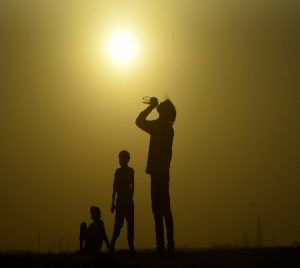
THE EXPLANATION:
- As large parts of India and Pakistan experience scorching temperatures, the U.N.’s specialized agency on weather has said while it is premature to attribute the extreme heat in the two countries solely to climate change, it is consistent with a changing climate, with heatwaves starting earlier than in the past.
- Extreme heat is gripping large parts of India and Pakistan, impacting hundreds of millions of people in one of the most densely populated parts of the world, the World Meteorological Organisation (WMO).
- It said that according to The India Meteorological Department, maximum temperatures reached 43 to 46°C in widespread areas on April 28 and that this intense heat will continue until May 2.
- It is premature to attribute the extreme heat in India and Pakistan solely to climate change. However, it is consistent with what we expect in a changing climate. Heatwaves are more frequent and more intense and starting earlier than in the past.
- Heatwaves have multiple and cascading impacts not just on human health but also on ecosystems, agriculture, water and energy supplies and key sectors of the economy, the WMO said adding that the risks to society underline why it is committed to ensuring that multi–hazard early warning services reach the most vulnerable.
- It noted that the heatwave was triggered by a high–pressure system and follows an extended period of above average temperatures. India recorded its warmest March on record, with an average maximum temperature of 33.1 ºC, or 1.86 °C above the long–term average. Pakistan also did so for at least the past 60 years, with a number of stations breaking March records.
- The WMO noted that India has established a national framework for heat action plans through the National Disaster Management Authority which coordinates a network of State disaster response agencies and city leaders to prepare for soaring temperatures and ensure that everyone is aware of heatwave dos and don’ts.
- It said Ahmedabad was the first South Asian city to develop and implement a city-wide heat health adaptation in 2013 after experiencing a devastating heatwave in 2010.This successful approach has been expanded to 23 heatwave–prone States and serves to protect more than 130 cities and districts.
- According to the WMO both countries have successful heat–health early warning systems and action plans, including those specially tailored for urban areas.
- Heat Action Plans reduce heat mortality and lessen the social impacts of extreme heat, including lost work productivity.
- The WMO said the Intergovernmental Panel on Climate Change, in its Sixth Assessment Report, said heatwaves and humid heat stress will be more intense and frequent in South Asia this century.
- The WMO also cited an open–access publication recently issued by India’s Ministry of Earth Sciences that highlights that the frequency of warm extremes over India has increased during 1951–2015, with accelerated warming trends during the recent 30-year period 1986–2015.
- Civil society, such as the Red Cross Red Crescent Society and the Integrated Research and Action for Development (IRADe), also play a critical role, deploying lifesaving communications and interventions to vulnerable communities.
BASIC INFORMATION:
Heat WaveA Heat Wave is a period of abnormally high temperatures, more than the normal maximum temperature that occurs during the summer season in the North-Western parts of India. Heat Waves typically occur between March and June, and in some rare cases even extend till July. The extreme temperatures and resultant atmospheric conditions adversely affect people living in these regions as they cause physiological stress, sometimes resulting in death. The Indian Meteorological Department (IMD) has given the following criteria for Heat Waves: 1. Heat Wave need not be considered till maximum temperature of a station reaches atleast 40°C for Plains and atleast 30°C for Hilly regions. 2. When normal maximum temperature of a station is less than or equal to 40°C Heat Wave Departure from normal is 5°C to 6°C Severe Heat Wave Departure from normal is 7°C or more. 3. When normal maximum temperature of a station is more than 40°C Heat Wave Departure from normal is 4°C to 5°C Severe Heat Wave Departure from normal is 6°C or more. 4. When actual maximum temperature remains 45°C or more irrespective of normal maximum temperature, heat waves should be declared. 5. Higher daily peak temperatures and longer, more intense heat waves are becomingly increasingly frequent globally due to climate change. |
2. INSURANCE COVERAGE FOR FISHERIES, AQUACULTURE UNITS ABYSMAL IN INDIA, SAYS FAO REPORT
THE CONTEXT: FAO ‘World Review of Capture Fisheries and Aquaculture Insurance 2022’ has recommended that private and public insurance service providers work together as there is low penetration of insurance products in the fisheries sector. The service providers must also take proactive measures to help the aquaculture and fisheries insurance market of India recover.
THE EXPLANATION: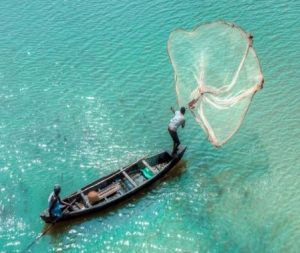
- The low penetration of insurance products in the fisheries sector, the ‘FAO World Review of Capture Fisheries and Aquaculture 2022’ has recommended that public and private insurance service providers work together to take proactive measures to help India’s fisheries and aquaculture insurance market recover.
- With the weather being a factor in the fisheries industry, insurance service providers should be encouraged to participate in order to improve the sector’s overall competitiveness and efficiency of service delivery.
- When occupational hazards to fishers’ and fish farmers’ lives and property are on the rise as a result of more frequent extreme weather events in recent years, the report takes on greater significance.
- Fishermen and aquaculture farmers, on the other hand, are generally unaware of insurance options. In India, fishing vessels, coastal immovable property, and aquaculture units have abysmal insurance coverage. Appropriate extension efforts by government agencies, non-governmental organizations, and aquaculture societies, with appropriate participation from the fishing community, could bridge the gap and facilitate insurance product marketing at the grassroots level.
- The asset insurance and fishing vessels in the coastal region have a high cost for insurance policies and this is affecting insurance coverage as people are not willing to invest that amount. Also, the premiums in this sector cannot be paid in installments. Along with this the aquaculture farmers and fishermen are mostly unaware of available insurance options.
- The report suggested that bundling disaster risk insurance packages with existing micro-credit schemes could be a viable option, given the strong network of micro-finance institutions and self-help groups in coastal areas.
- One of the reasons for the low adoption of the fishing vessels and asset insurance in the coastal region, is the prohibitive cost of the policies currently available.
THE INTERNATIONAL RELATIONS
3. INDIA-UAE COMPREHENSIVE ECONOMIC PARTNERSHIP AGREEMENT (CEPA)
THE CONTEXT: India and the UAE have signed a Comprehensive Economic Partnership Agreement (CEPA) with the aim of increasing bilateral merchandise trade to $100 billion by 2030 and it will be operationalized from 1 May, 2022.
THE EXPLANATION:
- The India-UAE CEPA marks the first trade agreement India has made with a major trading partner in over a decade. The last major FTA India signed was with Japan in 2011.
- The agreement is the first in a series of FTAs that India is pursuing to boost exports sharply to 1 trillion dollars each in merchandise and services by 2030.
- India is also pursuing FTAs with Australia, UK, Canada, Israel and the EU.
- Under the agreement, the UAE is set to eliminate duties on 80 per cent of its tariff lines which account for 90 per cent of India’s exports to the UAE by value. This is particularly important for exports in highly competitive areas such as textiles and garments where India exporters have thus far been facing a competitive disadvantage in import tariffs.
- The zero-duty access for Indian products to the UAE is set to expand over 5-10 years to 97 per cent of UAE tariff lines corresponding to 99 per cent of India’s exports by value.
- Key domestic sectors that are set to benefit include, gems and jewellery, textiles, leather, footwear, sports goods, engineering goods, automobiles and pharmaceuticals.
- India has excluded certain goods from the agreement through a “sensitive list” of products amounting to 10 per cent of tariff lines that are excluded completely from the agreement.
- Dairy, fruits, vegetables, cereals, tea, coffee, sugar, food preparations, tobacco, toys, plastics, scrap of aluminium, and copper are among the products that are excluded from the pact. Certain other areas such as those that have seen sharp growth in domestic production or areas where the government is incentivising manufacturing through production-linked incentive schemes have also been excluded from the agreement.
- The India-UAE CEPA is based on the Prime Minister’s vision of ‘SabkaSaath, Sabka Vikas, Sabka Vishwas aur SabkaPrayas’. India wants a larger share of the UAE market as Government sets its eyes on achieving $1 trillion goods exports by 2030.

THE GOVERNMENT INITIATIVES AND POLICIES
4. MECHANISM TO PROCESS UNORGANIZED WORKERS’ ACCIDENT CLAIMS IN THE WORKS: MINISTRY OF THE UNION LABOUR AND EMPLOYMENT
THE CONTEXT: The Union Labour and Employment Ministry is working on a mechanism to process accident insurance claims by unorganised workers registered on the e-Shram portal, which has seen over 27 crore registrations so far.
THE EXPLANATION:
Thee-Shram portal was launched six months ago with the aim of creating a national database of unorganised workers and to facilitate social security schemes for them. Among the promises made at the time was that the workers would be eligible for Rs 2 lakh as accident insurance.
- The discussions were based on to link the e-Shram portal with the Pradhan Mantri Suraksha Bima Yojana, the Centre’s existing accident insurance scheme. The scheme would allow the workers to get the direct benefit transfer (DBT) through the e-Shram unique ID number. The official added that the unique IDs on the e-Shram portal carried the same series from the Employees Provident Fund Organisation’s (EPFO) universal account number (UAN).
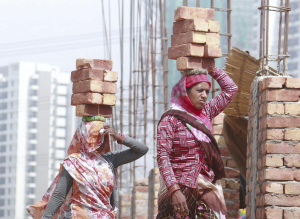
- At the time the portal was launched in August 2021, the Ministry had estimated that there were 38 crore unorganized sector workers in the country. According to the Ministry functionary, an analysis of the registrations so far was being carried out and a new campaign to get more workers to register would also be planned.
- In her Budget Speech 2022-2023, Finance Minister Nirmala Sitharaman had announced the linking of four portals- the National Career Service, e-Shram, UDYAM (for those interested in starting MSMEs) and ASEEM (Atmanirbhar Skilled Employee Employer Mapping).
- The Labour Ministry announced on April 20 that the inter-linking of the NCS and e-Shram portals had been completed recently.
- This linkage has enabled unorganised workers registered on e-Shram to seamlessly register on NCS and look for better job opportunities through NCS. So far, more than 26,000 e-Shram beneficiaries have registered on NCS and have started benefiting from this linkage.
5. WANT INDIA TO BE A KEY PARTNER IN GLOBAL SEMICONDUCTOR SUPPLY CHAIN: PM MODI
THE CONTEXT: Prime Minister Narendra Modi in his inaugural address At the ‘Semicon India Conference 2022’ in Bengaluru said the government’s aim is to place India as one of the key partners in the global semiconductor supply chain.
 THE EXPLANATION:
THE EXPLANATION:
- PM addressed that almost all of the top 25 semiconductor design companies globally have set up design and research and development centres in India. Additionally, the prime minster said that the government has undertaken several measures to transform the Indian manufacturing sector, when humanity was fighting a once-in-a-century pandemic.
- PM pointed out that the government has committed $10 billion to attract semiconductor companies to the country. The incentive scheme was announced on 15 December by Union minister Ashwini Vaishnaw, as part of efforts to establish the country as a global electronics hub.
- India was on its way to connect 600,000 villages with broadband, and is investing in developing capacity in 5G, IoT and green energy technologies.
- India is working to unleash the next wave of innovation in data, AI and other technologies. Thus, India is headed for robust economic growth. We have the world’s fastest growing startup ecosystem; new unicorns are coming up every few weeks. India’s own construction of semi conductors is expected to cross $80 billion by 2026 and $100 billion by 2030.
- The government has earmarked production linked incentive schemes to the tune of over $26 billion in 14 key sectors, with electronics industry expected to see record growth.
- To provide the enabling environment for the semiconductor industry in India, the efforts in enhancing digital connectivity, enabling broadband connections in the villages, technological advancements such as AI/ML, robust economic growth, and movements in ease of doing business and digitisation should be able to act as catylsts for the growth of the semiconductor industry in India.
| BASIC INFORMATION:
WHAT ARE SEMICONDUCTORS? A semiconductor is a substance whose resistivity lies between the conductors and insulators. The property of resistivity is not the only one that decides a material as a semiconductor, but it has few properties as follows.
Semiconductor devices are extensively used in the field of electronics. The transistor has replaced the bulky vacuum tubes, from which the size and cost of the devices got decreased and this revolution has kept on increasing its pace leading to the new inventions like integrated electronics. |
THE ECONOMIC DEVELOPMENTS
6. INDIA’S UNEMPLOYMENT RATE ROSE TO 7.83% IN APRIL: CMIE DATA
 THE CONTEXT: India’s unemployment rate rose to 7.83% in April from 7.60% in March, according to the recent data released by the Centre for Monitoring Indian Economy (CMIE).
THE CONTEXT: India’s unemployment rate rose to 7.83% in April from 7.60% in March, according to the recent data released by the Centre for Monitoring Indian Economy (CMIE).
THE EXPLANATION:
- The urban unemployment rate rose to 9.22% in April from 8.28% in the March 2022, while the rural unemployment rate slipped to 7.18% from 7.29%, the data showed.
- The highest unemployment rate of 34.5% was recorded in the northern state of Haryana, followed by 28.8% in Rajasthan.
- Jobless rate in Haryana stood at 34.5 per cent, while it was 28.8 percent and 21.1 per cent in Rajasthan and Bihar respectively. While Himachal Pradesh, Chhattisgarh, and Assam saw the lowest unemployment rate which stood at a miniscule 0.2 per cent, 0.6 per cent and 1.2 percent respectively.
- The given reason for the rose unemployment rate is the labour market is showing signs of economic distress, also India’s labour force fell by 38 lakhs in the month of March, lowest level in the last eight months.
- According to Economists job opportunities have been hit by sluggish domestic demand and the slow pace of economic recovery amid rising prices.
- According to CMIE millions left the labor markets, they stopped even looking for employment, possibly too disappointed with their failure to get a job and under the belief that there were no jobs available.
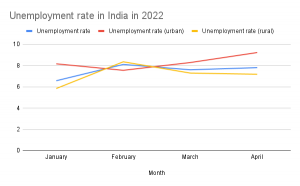
7. INDIA’S FOREX RESERVES HAVE FALLEN OVER $30 BILLION
THE CONTEXT: India saw its foreign exchange (forex) reserves slump by $3.27 billion to $600.42 billion in the week concluded on April 22, the Reserve Bank of India (RBI) showed in its latest data.
THE EXPLANATION: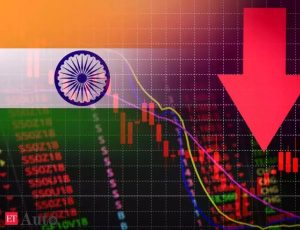
- For the latest reported week, April 22 – the country’s forex reserves fell by $3.271 billion to $600.423 billion in the week ended April 22, compared to $631.527 billion reported for the February 25 week.
- Gold reserves shrank by $377 million to $42.768 billion in the reporting week. The Special Drawing Rights (SDRs) with the International Monetary Fund (IMF) fell $33 million to $18.662 billion, the central bank data showed.
- With the latest fall, the country has seen seventh straight drop in its forex reserves – wiping out over $30 billion in just two months since the Russia-Ukraine war broke out.
- For India to build its FX reserves to above $630 billion, it took almost a year, but the global energy crisis from the Ukraine war has hurt the country’s currency and its import cover, wiping out over $30 billion.
- The Reserve Bank had to keep interfering and selling dollars to prevent a slide in the value of the rupee in view of the Russia-Ukraine conflict situation.
- Further, the dollar’s rise against key currencies overseas amid US inflation surge and bond yields hitting multi-year highs too added to the pressure on the rupee as the US situation warranted that the Fed take an aggressive posture on rate hikes.
- The double whammy from the rupee slide and crude oil surging to well above $100 per barrel roiled market sentiment in India because the country depends on imports for 85 per cent of its oil needs.
- It suggests that the RBI keep selling dollars to prevent a slide in the value of the rupee amid the ongoing Russia-Ukraine conflict.
| BASIC INFORMATION:
Foreign Exchange Reserves
Foreign Currency Assets(FCAs)
|
THE PRELIMS PRACTICE QUESTIONS
QUESTION OF THE DAY
Q. Consider the following statements about World Meteorological Organization (WMO):
- It was established in 1950 through WMO Convention.
- It is specialized agency of the United Nations.
- Its secretariat is headquartered in Rome.
- India is founding member of WMO.
Which of the statements given above is/are correct?
a) 1 and 2 only
b) 1, 2 and 4 only
c) 2, 3 and 4 only
d) All of them
ANSWER FOR 30TH APRIL 2022
Answer: A
Explanation:
Statement 1 is correct: The judges of a high court are appointed by the President.The chief justice is appointed by the President after consultation with the chief justice of India and the governor of the state concerned. For appointment of other judges, the chief justice of the concerned high court is also consulted. In case of a common high court for two or more states, the governors of all the states concerned are consulted by the president.
Statement 2 is incorrect: Constitution has not prescribed a minimum age for appointment as a judge of a high court.
Statement 3 is incorrect: Constitution does not prescribe a fixed tenure of a judge of a high court. He holds office until he attains the age of 62 years.
Statement 4 is incorrect: The Judges Enquiry Act (1968) regulates the procedure relating to the removal of a judge of a high court by the process of impeachment.
Spread the Word
